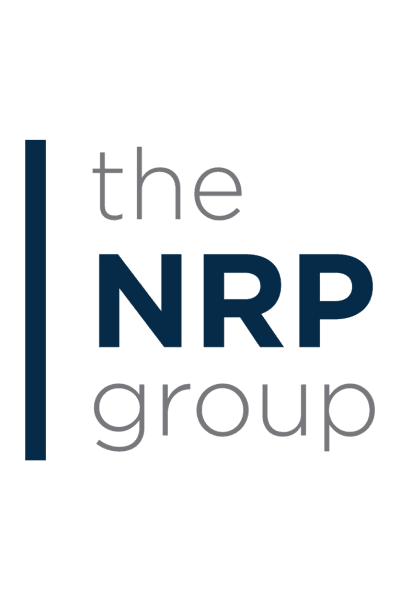
During the 1950s through the 1960s, homosexuality and gender non-conformity were illegal in 49 states and criminally punishable by fines up to imprisonment. This societal view propagated violence and discrimination against members of the “LGBTQ” community. While there were few refuges for those who were gay, the Stonewall Inn located in New York served as a safe haven. After years of discrimination, during an invasion by the police in the late 1960s of the Stonewall Inn, a protest turned into a riot as individuals were no longer willing to be victimized for living authentically. The riots were a pivotal turning point for the movement for LGBTQ+ equality in society at large. In 1970, one year after the riots, the first gay pride parade publicly celebrated and affirmed the gay community.
Despite the progress that has been made in the last 50 years, youth who identify as LGBTQ+ still experience the harsh realities of discrimination, violence, and harassment. While home is meant to be a safe haven, surrounded by the comfort of loved ones, for many youth who come out to their families, they still experience discrimination. Such negative responses to coming out can negatively impact a youth’s physical and mental well-being. According to a survey conducted by the Trevor Project, 29% of “LGBTQ” youth have been homeless, kicked out, or ran away in order to find refuge. In addition, 45% of youth who identified as “LGBTQ” seriously considered attempting suicide.
Grey Hilliard-Koshinsky (they, them, theirs), former foster youth, adopted person, and child welfare professional, emphasizes that, “foster care is a microcosm of all of the -isms and -obias in larger society.” Although LGBTQ+ children living in their biological homes are subject to societal discrimination, the stakes are higher for those who are in ‘out of home placements’ such as foster homes, kinship care, group care, guardianship or are adopted. LGBTQ+ youth who have been in foster care have a nearly four times greater odds of experiencing multiple placements, “abandonment, or running away” due to discrimination and lack of an affirming environment. In order to create safety for youth in ‘foster care’, it is imperative that adoptive, foster, kinship, and other caregivers are knowledgeable, willing to learn, and eager to create an affirming home. This education of caregivers is critical because the community of youth in foster care is disproportionately comprised of queer youth. According to a survey released in 2021 of youth living in foster care in Cuyahoga County, 32 percent of the participants identified as LGBTQ+. In comparison, only 11.2 percent of the general population of American youth identified as “LGB or unsure.”
Grey Highlights 5 Things Adoptive, Foster, Kinship, and other Caregivers Need to Know
- Coming out in foster care is high stakes: Youth in ‘out of home placement’ are more vulnerable when choosing to live authentically and share their identity with caregivers because of the fear of rejection. For youth separated from their families, the power differential in someone else’s home as a temporary visitor is a legitimate concern. Anxiety about pleasing adoptive, foster, and kinship parents causes LGBTQ+ youth to live in constant fear of rejection should they decide to come out. In order to be authentically oneself, some closeted youth experiencing the child welfare system face the risk of another disruption and/or to be estranged all together. Coming out is a different calculation when you’ve had to sever and rebuild family connections. Going into foster care means a disruption has already occurred with the ability to believe that family is going to be there for them. For people like myself who experienced adoption, there is a double edge sword, an impossible expectation, and a level of pressure from the narrative of being ‘chosen’. The last thing youth want is to be rejected by the family who chose them.
- Representation matters: It’s essential to model that you are comfortable and accepting of people who have different identities than your own. A child’s exploration of sexual orientation and gender identity is a process and a journey that evolves over time. The approach to talking with children about this will look different based on a child’s age as well as several other factors. Although youth in your home may not spontaneously talk openly about the topic, this does not mean that they do not have questions. If caregivers never talk about sexual orientation and gender, children may not feel safe talking directly about this topic but rather might ask hypothetical questions to see how adults will respond. For me, I asked questions such as, “do you think there are any gay people in your church?” Youth watch and observe how you react to other members of the LGBTQ+ community on TV or in public. They internalize your language as it relates to their identity. Cultivate and invite discussion. Expose youth to positive representations of LGBTQ+ people through movies, TV, books and video games, etc.
- Language matters: It is understandable to have questions about language and terminology, especially because our language is evolving on this topic. Communities within this growing acronym of LGBTQAIIP+ are complex and changing as we work to create more space in our society to unpack human experience. Ideally, caregivers would look for resources before a child in their care shows indications that they are exploring sexual orientation and/or gender identity, however, it’s never too late to start learning. Language is also incredibly powerful and formative to how we establish our self-worth. The words of parents and religious doctrine become the inner automatic thought system for how youth feel about themselves. LGBTQ+ people work lifelong to thrive by rewriting internalized narratives of shame. For me, the word ‘abomination’ is particularly difficult to ever unhear and has had a lasting impact.
- Tolerance vs affirmation: There is a difference between tolerance and affirmation. An example of tolerance is saying, “love the sinner but hate the sin,” while adding in the same sentence that you that will always love them unconditionally. This contradiction causes children to believe that they are not truly loved or accepted for who they are and that they must hide parts of themselves to be loved. It also clearly indicates that anything outside of heterosexuality and gender conformity is pathological deviant behavior. Ask yourself if your actions match your words. Tolerance is a starting point, but it is not enough. Affirmation is fully accepting and creating equality for LGBTQ+ people. When I was younger, I wish adults in my life had normalized LGBTQ+ experiences that were clearly different than their own rather than portraying that difference as the punchline to a joke and/or pathology.
- One size doesn’t fit all: Child welfare systems and society at large are wrestling with how to balance the rights of children and the rights of adult caregivers when it comes to medical decisions that have life-long implications. If you don't know how to answer a child’s question, model inquisitive action, rather than silence. For example, a parent could say to a youth, “I have a lot of questions too. The vocabulary is changing so quickly, and not everyone is agreeing. I don't have all the answers, but let’s figure them out together.” As with any community, no individual LGBTQ+ person can speak for the entire community. Meeting youth where they are at is essential to the process. What might work for one youth to opening a dialogue may not land well for another. Ultimately willingness to engage in discussion about this vulnerable topic has the potential to strengthen the relationship between child and caregiver.
Recommended Resources:
Books: “Now That You Know: A Parents' Guide to Understanding Their Gay and Lesbian Children”
Inclusive Bedtime Stories: https://www.familyequality.org/2021/04/16/childrens-books-nonbinary/
Movies/TV: The Foster’s, Pray Away, Gender Revolution
Websites: www.familyequality.org, https://www.thetrevorproject.org
Local Resources in Cleveland:
- LGBT Community Center of Greater Cleveland
- Colors+
- SAGE Cleveland
- Studio W.117th
- AIDS Taskforce of Greater Cleveland
- MetroHealth Pride Clinic
About Grey Hilliard-Koshinsky
Grey is a former foster youth, adoptee, nonprofit leader, national public speaker, child advocate, teacher, metalsmith, and artist. Grey has nearly 15 years of experience to the field of Child Welfare through advocacy, legislative testimony, authentic youth engagement, non-profit leadership, workshop development and training of child welfare and social work professionals, as well as community organizing.













